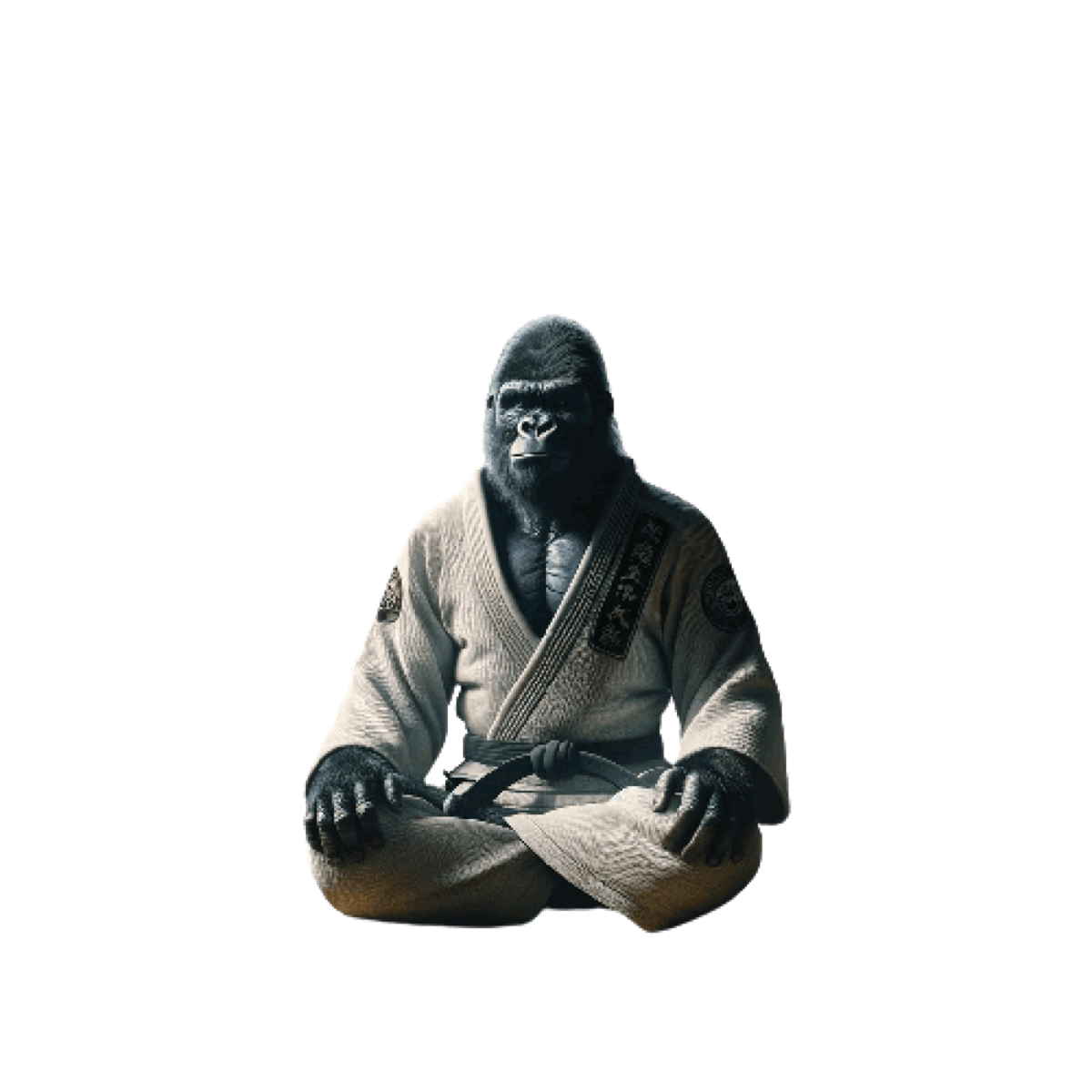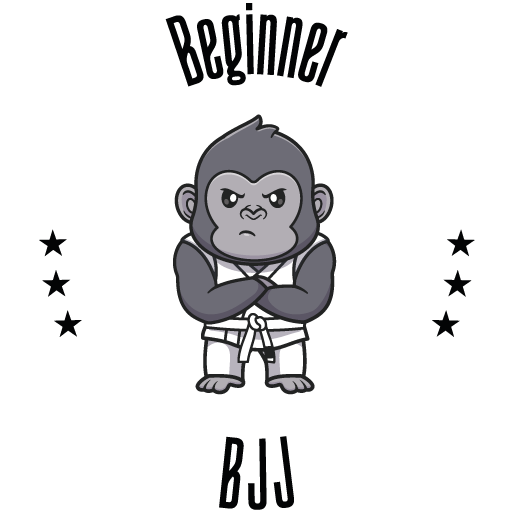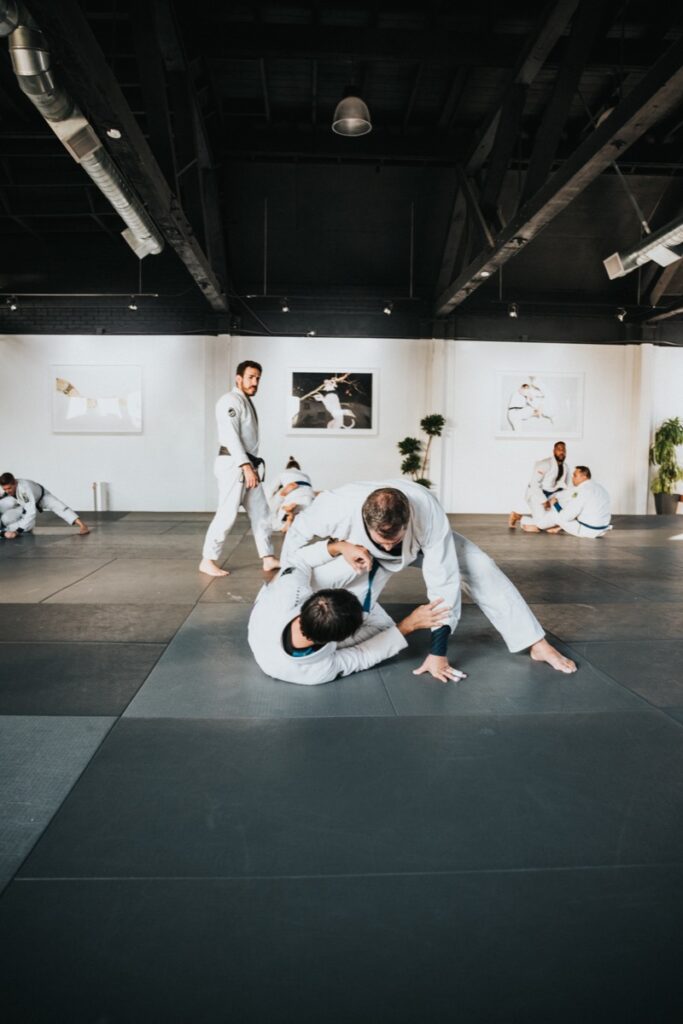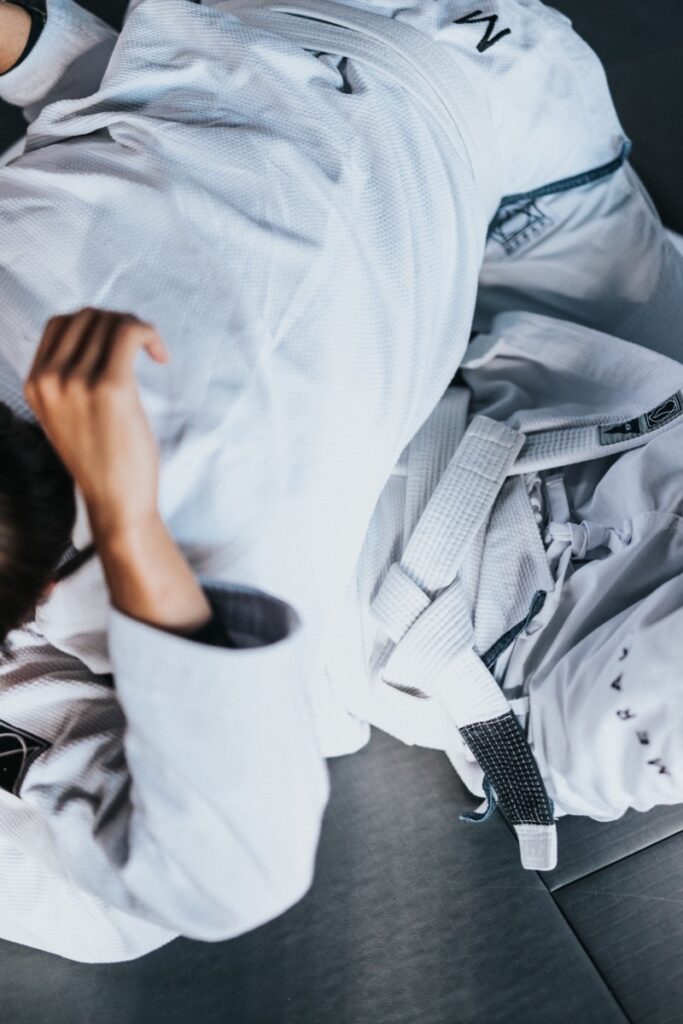Menu
Close
BJJ health and safety information
Our comprehensive guide ensures beginner BJJ students know all about the key health and safety aspects of Brazilian Jiu-Jitsu
Welcome to the world of Brazilian Jiu-Jitsu (BJJ)! As you embark on this thrilling martial arts journey, it’s crucial to emphasise health and safety strongly. This art form may initially seem challenging, but BJJ can be an enriching and safe experience with the correct approach.
For beginner BJJ students, the journey goes beyond learning new techniques and strategies. It’s also about understanding how to safeguard your body from potential injuries, make the most out of your training sessions, and harness the mind-body connection for improved performance.
BJJ is not just a physical game; it combines mental strategy, proper body mechanics, and overall physical fitness. As you progress, you’ll realise that BJJ offers a unique way of strengthening your body and mind.
This comprehensive guide will address the critical health and safety aspects of BJJ. We aim to empower you with knowledge and tips to ensure your BJJ experience is safe, rewarding, and life-changing. So let’s dive in and kickstart your BJJ journey on a safe note!

Understanding BJJ and body mechanics
Basics of body mechanics in BJJ
Brazilian Jiu-Jitsu (BJJ) is an art form that relies heavily on the intelligent use of body mechanics.
The essence of BJJ is leveraging your body’s mechanics to apply and defend against techniques efficiently and effectively.
As a beginner, understanding the fundamentals of body mechanics in BJJ can help prevent injuries and enhance your overall performance.
Body mechanics in BJJ involves understanding how your body moves, how it can generate power, and how different body parts work together to perform a particular technique.
Balance, leverage, and base play a crucial role in correctly performing techniques.
For example, knowing how to distribute weight, maintain your base, and use your opponent’s energy against them are all integral parts of BJJ body mechanics.

Importance of proper technique
Proper technique is the backbone of BJJ. When executed correctly, BJJ techniques are efficient, effective, and safe. However, performing techniques incorrectly can put undue stress on your body and lead to injuries.
For beginner BJJ students, focusing on learning the correct way to execute techniques is essential, even if it means slowing down the pace. Prioritizing proper form over speed or power can protect your body and ensure your training is productive and injury-free.
The importance of proper technique extends to all aspects of BJJ training. Every detail counts, from correctly tying your belt, maintaining proper posture, and performing techniques like takedowns, sweeps, and submissions, to practising safe falls.
Remember, in BJJ, as in any martial art. Safety should always come first. Take the time to learn, practice, and perfect your technique under the guidance of experienced instructors, and always listen to your body. If something feels wrong or painful, stopping and seeking advice to prevent potential injuries is crucial.
In the following sections, we will delve deeper into the different aspects of health and safety in BJJ, from protective gear and injury prevention to nutrition and mental well-being.

Common BJJ injuries and how to avoid them
Types of injuries in BJJ
While BJJ is generally safe when practised with care, like any physical activity, it comes with potential injury risks. The most common types of BJJ injuries usually involve the joints due to the nature of the techniques used, often targeting the opponent’s joints to secure a submission.
Knee Injuries: These can range from minor sprains to more severe injuries like ACL tears. Knee injuries often occur from sudden twisting movements or improper technique during a takedown or sweep.
Shoulder Injuries: In BJJ, the shoulders are frequently used for various techniques and are subjected to pressure in many positions. This usage can lead to sprains, dislocations, or rotator cuff injuries.
Elbow Injuries: Commonly caused by armbar submissions, elbow injuries can include sprains or dislocations.
Finger Injuries: Finger injuries are common in BJJ due to gripping the Gi. These can include sprains, fractures, and ligament tears.
Back and Neck Injuries: These injuries can occur from improper posture, awkward positioning, or sudden movements. They can range from muscle strains to severe conditions like herniated discs.
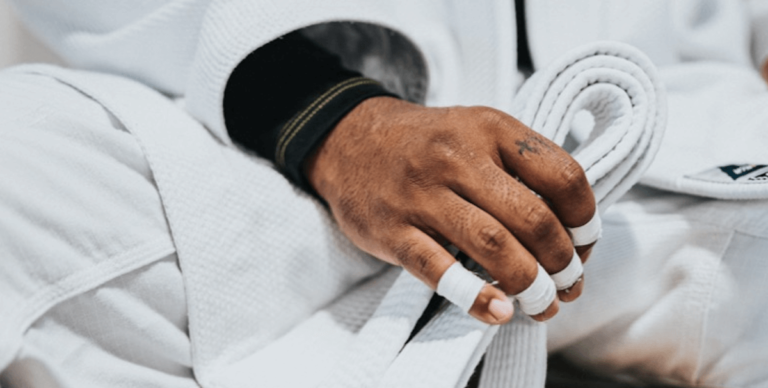
Preventing injuries in BJJ
Preventing injuries is crucial for the longevity of your BJJ journey. Here are some essential safety tips:
Proper Technique: As discussed earlier, proper technique is essential. Incorrect technique can lead to unnecessary strain and injury.
Warm-Up and Cool Down: Always start your training with a warm-up to prepare your muscles and joints for activity and end with a cool down to help your body recover.
Strength and Conditioning: Regular strength and conditioning workouts can help improve your overall physical condition, making you less susceptible to injuries.
Protective Gear: Wearing appropriate protective gear, like mouthguards, knee pads, and rash guards, can help prevent injuries.
Rest and Recovery: Allow your body time to rest and recover. Overtraining can lead to injuries as it doesn’t give your body enough time to heal.
Listen to Your Body: Stop and rest if something doesn’t feel right during training. If pain persists, seek medical attention.
Remember, the key to injury prevention in BJJ is proper technique, regular physical conditioning, adequate rest, and using the proper protective gear. In the following sections, we’ll explore these aspects in more detail.
The role of protective gear in BJJ
Essential BJJ safety gear
Just like a carpenter needs their tools to get the job done, Brazilian Jiu-Jitsu practitioner needs the right BJJ gear to ensure maximum mat protection. While you already know about the Gi and No-Gi attire, it’s time to delve deeper into essential safety equipment in BJJ.
Mouthguards are essential for protecting your teeth, lips, and gums from injury during training and competition. Mouthguards also help reduce the risk of concussions.
Knee Pads: As BJJ involves a lot of grappling on the knees, wearing knee pads can protect you from cuts, abrasions, and even more severe knee injuries.
Ear Guards: These can protect you from the ‘cauliflower ear’, a common injury in grappling sports caused by repeated ear trauma.
Rash Guards: In No-Gi training, rash guards protect your skin from mat burns, and it helps to keep your body clean and protected from the possible transmission of skin diseases.
Finger Tape: Finger tape can be beneficial in preventing and managing finger injuries caused by the constant gripping in BJJ.

Using protective gear correctly
Using BJJ protective gear correctly can significantly reduce your risk of injury. Here are some key points to keep in mind:
Proper Fit: Your gear should fit well. Loose gear can fail to provide the necessary protection, and gear that is too tight can restrict your movements and blood circulation.
Cleanliness: Keep your gear clean. Dirty gear can become a breeding ground for bacteria, leading to skin infections.
Inspection: Regularly inspect your gear for any wear and tear. Replace your gear when it starts showing signs of damage.
Proper Usage: Each piece of gear is designed for specific protection. Make sure you understand how to use each piece correctly.
In the following sections, we will discuss maintaining your health and safety in BJJ, focusing on conditioning, nutrition, and recovery strategies.

Nutrition and hydration in BJJ
Nutrition for BJJ
Your body is your most valuable asset in Brazilian Jiu-Jitsu (BJJ). Fueling it correctly with proper nutrition is as critical as learning the perfect triangle choke. In BJJ, nutrition can significantly impact your performance, recovery, and overall health.
As a BJJ practitioner, your diet should be rich in lean proteins, complex carbohydrates, and healthy fats. Protein is essential for muscle repair and growth, carbohydrates provide the energy needed for intense training sessions, and fats play a vital role in hormone production and overall health.
A balanced BJJ diet should include plenty of fruits and vegetables, rich in vitamins, minerals, and antioxidants to support immune function and overall health.
Remember, everybody is unique, and there’s no one-size-fits-all approach to nutrition in BJJ. It can be beneficial to work with a registered dietitian or nutritionist who understands the specific demands of BJJ to help customize your nutrition plan.
Importance of hydration in BJJ
Hydration is another critical aspect of health and performance in BJJ that is often overlooked. Dehydration can decrease strength, endurance, and cognitive function, negatively impacting your performance on the mat.
A good rule of thumb is to drink at least half your body weight in ounces of water daily. For example, weighing 160 pounds, you should aim for at least 80 ounces of water daily. This intake should increase if you train intensely or in a hot environment.
Rehydration after training is equally important, especially after prolonged or intensive sessions where sweat loss is significant. Along with water, replenishing electrolytes is crucial to support muscle function and recovery.
Maintaining proper nutrition and hydration practices in BJJ can go a long way in enhancing your performance, recovery, and overall health.

Importance of warm-up and cool down in BJJ
Effective warm-up routines
Preparing your body for the strenuous and intense activity of Brazilian Jiu-Jitsu (BJJ) is paramount in enhancing performance and reducing the risk of injuries. An effective BJJ warm-up is more than just a few stretches or a quick jog.
A proper warm-up for BJJ should encompass both general and specific components. The general component can involve light cardio activities such as jumping jacks or jogging to increase your body temperature and heart rate. The specific component should include exercises that mimic the movements and demands of BJJ, such as hip escapes, takedown drills, or bridging.
This combination of general and specific warm-up exercises can help prime your muscles and joints for the strenuous activity ahead, reduce the risk of injuries, and ultimately improve your overall BJJ performance.
Essential cool down exercises
Cooling down after an intense BJJ training session is as critical as the warm-up. It helps gradually bring your heart rate and body temperature down, facilitates recovery, and helps improve flexibility.
Your BJJ cool-down should consist of two main components: light cardio and stretching. A light cardio activity such as a slow walk or easy jog helps flush out toxins from your muscles and bring your heart rate down gradually.
Stretching after training can help reduce muscle tension, increase flexibility, and promote faster recovery. Focus on stretching the major muscle groups used in BJJ, such as your hips, back, shoulders, and legs.
Remember, BJJ is a demanding sport that requires your body to be at its best. Incorporating effective warm-up and cool-down routines into your training can significantly improve your performance and reduce the risk of injuries. In the next section, we’ll explore the importance of rest and recovery in maintaining your health and safety in BJJ.
Mental health and BJJ
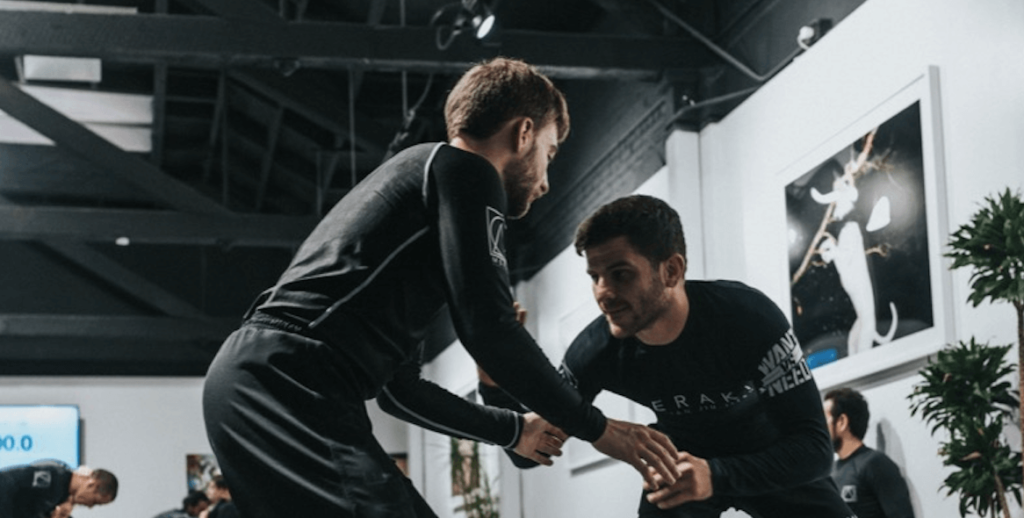
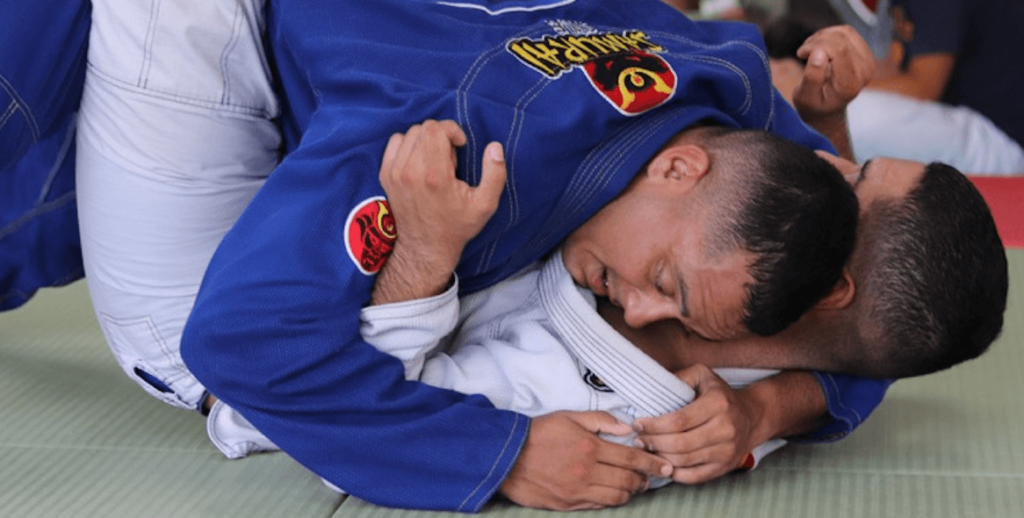
BJJ as a stress reliever
Mental health is as critical as physical health in Brazilian Jiu-Jitsu (BJJ). In a world where stress, anxiety, and burnout have become common, finding outlets to manage these challenges is crucial. That’s where BJJ comes in.
BJJ has been acknowledged widely as an effective stress reliever. The physical exertion of training releases endorphins, the body’s natural mood boosters, helping to alleviate stress and anxiety. Moreover, the intense focus required during BJJ training offers a form of ‘moving meditation’, allowing practitioners to momentarily put aside their daily worries and concentrate solely on the task.
Moreover, the sense of camaraderie and community in BJJ can also foster a supportive environment that promotes better mental health. Sharing challenges, successes, and goals with like-minded individuals can positively impact overall well-being.

Importance of mental strength in BJJ
Mental strength plays a pivotal role in BJJ. This art form doesn’t only test physical prowess but also mental fortitude. Developing mental strength can help you navigate challenges on the mat and improve your overall performance.
Strategic thinking, resilience, patience, and emotional control are all mental aspects honed through BJJ training. Matches often resemble physical chess games, requiring mental agility to anticipate and react to opponents’ moves. Furthermore, BJJ teaches practitioners to embrace failure as a learning opportunity, promoting resilience and a growth mindset.
In essence, mental health and BJJ go hand in hand. Training can serve as a valuable stress relief tool while building mental strength crucial for the mat and everyday life. Stay tuned for the next section, where we will address the critical topic of rest and recovery in the world of BJJ.
FAQs about health and safety in BJJ
Is BJJ safe for beginners?
Absolutely. While Brazilian Jiu-Jitsu (BJJ) is a physical sport with a risk of injuries like any other sport, it is generally safe for beginners. Proper training, learning techniques under a certified instructor, wearing appropriate gear, and warming up correctly can significantly reduce the risk of injuries.
What types of injuries are common in BJJ?
Common BJJ injuries usually involve the joints, such as sprains and strains, particularly in the knees and ankles. Sometimes, minor fingers, wrists, and elbows injuries can occur. Proper technique and safety practices can help to prevent these injuries.
How essential is protective gear in BJJ?
Protective gear is essential in BJJ. It ensures your safety during training and matches and improves your performance. Some standard BJJ gear includes a Gi, rashguards, mouthguards, and joint protectors.
How does nutrition and hydration impact my BJJ training?
Nutrition and hydration significantly affect your performance and recovery in BJJ. A balanced diet provides the necessary energy for training, while proper hydration prevents fatigue and aids muscle recovery.
How does BJJ affect mental health?
BJJ can have a positive impact on mental health. It is a stress reliever that helps improve focus and resilience, fosters a sense of community, and boosts self-confidence. However, like any sport, it’s crucial to maintain a balanced approach to avoid burnout.

